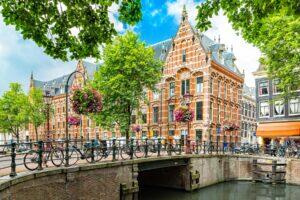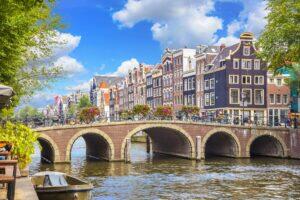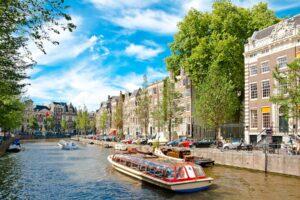Fodor's Expert Review Zeedijk
Few streets have had a longer or more torrid history than Zeedijk (it means "sea dike," as it sounds), which has been around since Amsterdam began life as a boggy hamlet. In the 15th and 16th centuries, its businesses serviced the lonely, thirsty sailors disembarking from the ships of the East India Company. By the 1970s, though, most of the traffic Zeedijk saw was drug traffic, and tourists were advised to avoid the neighborhood at night because of the junkies and high crime rate. Since its renovation, Zeedijk has become a pleasant street, with plenty of restaurants, pubs, and shops, and it's a very nice place to wander.
There are several interesting sights along the Zeedijk. The entrance of 15th-century Sint Olofskapel (St. Olaf Chapel) sports a sandstone sculpture by Hendrick de Keyser: grains growing out of a supine skeleton with a Latin inscription meaning "Hope for a better life." It's now an events venue. Across the street at No. 1 is one of only two houses... READ MORE
Few streets have had a longer or more torrid history than Zeedijk (it means "sea dike," as it sounds), which has been around since Amsterdam began life as a boggy hamlet. In the 15th and 16th centuries, its businesses serviced the lonely, thirsty sailors disembarking from the ships of the East India Company. By the 1970s, though, most of the traffic Zeedijk saw was drug traffic, and tourists were advised to avoid the neighborhood at night because of the junkies and high crime rate. Since its renovation, Zeedijk has become a pleasant street, with plenty of restaurants, pubs, and shops, and it's a very nice place to wander.
There are several interesting sights along the Zeedijk. The entrance of 15th-century Sint Olofskapel (St. Olaf Chapel) sports a sandstone sculpture by Hendrick de Keyser: grains growing out of a supine skeleton with a Latin inscription meaning "Hope for a better life." It's now an events venue. Across the street at No. 1 is one of only two houses with timber facades left in the city. Dating to around 1550, In't Aepjen (In the Monkeys) provided bedding to destitute sailors if they promised to return from their next voyage with a monkey. Café 't Mandje at No. 65 was the first openly gay bar, run by legendary lesbian biker chick Bet van Beeren (1902–67). It reopened in 2008, with much of the original interior restored, complete with the trophy ties Bet snipped off customers. The Chinese community dominates the end of the street, where street signs are in Dutch and Mandarin. There are around 10,000 Chinese in Amsterdam, a 20th-century presence much younger than the Dutch in China (Taiwan came under Dutch control in 1624). One highlight is the Fo Guang Shan He Hua Buddhist temple (No. 118), the largest Buddhist temple in Europe constructed in the traditional style. Chinatown extends into Geldersekade and Nieuwmarkt, and every year there are small (but colorful) Chinese New Year celebrations.
READ LESS








